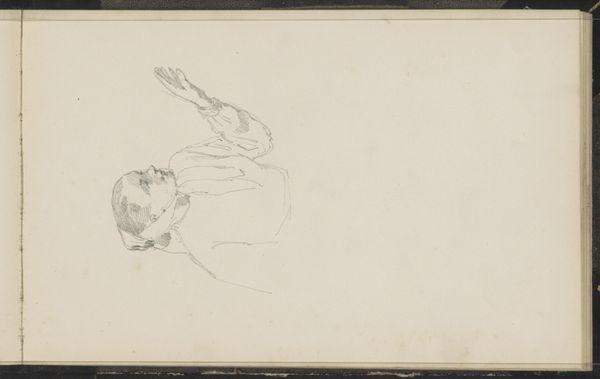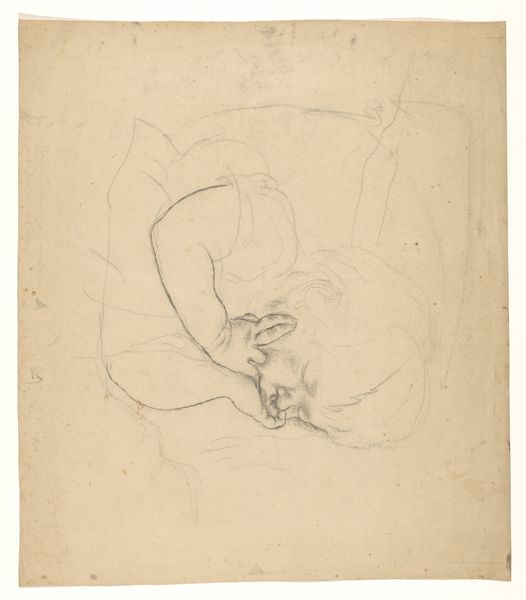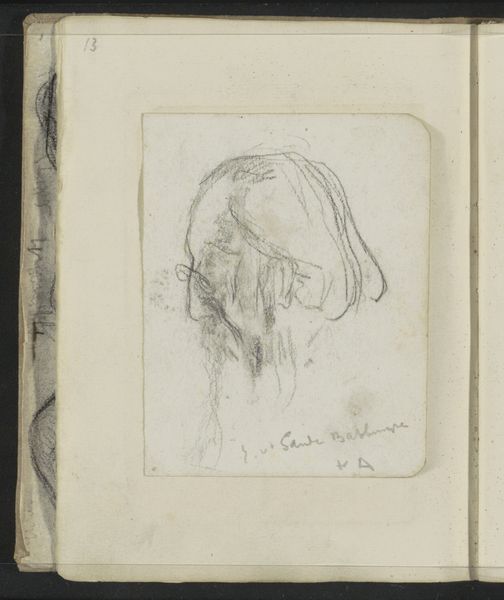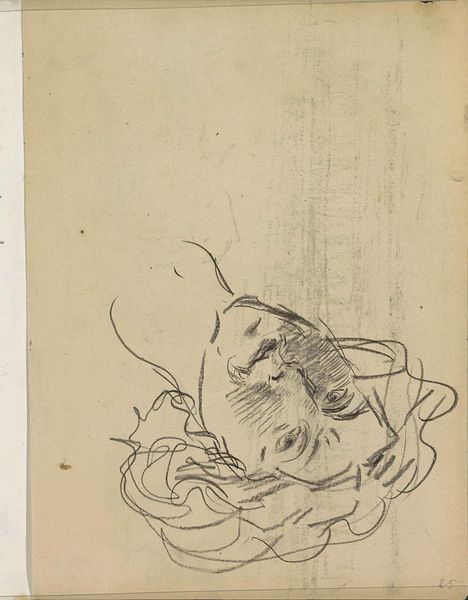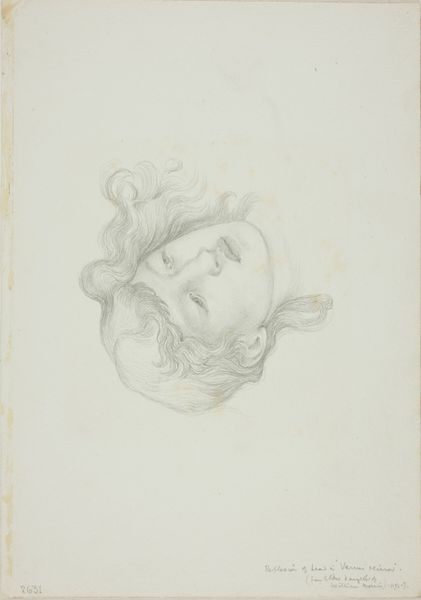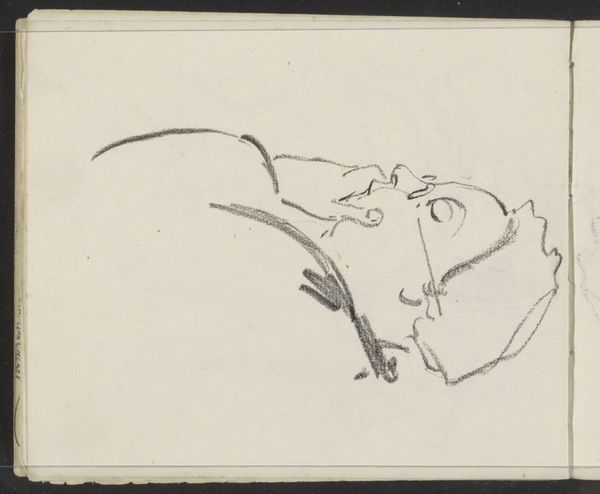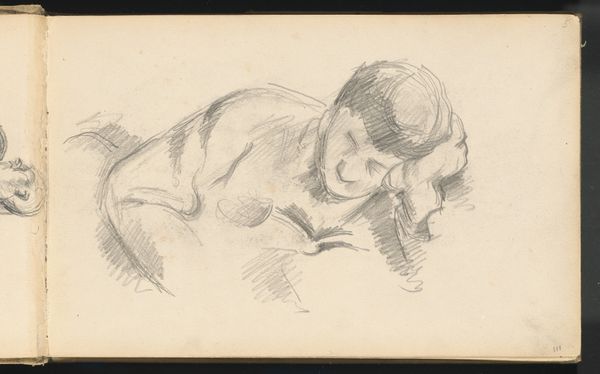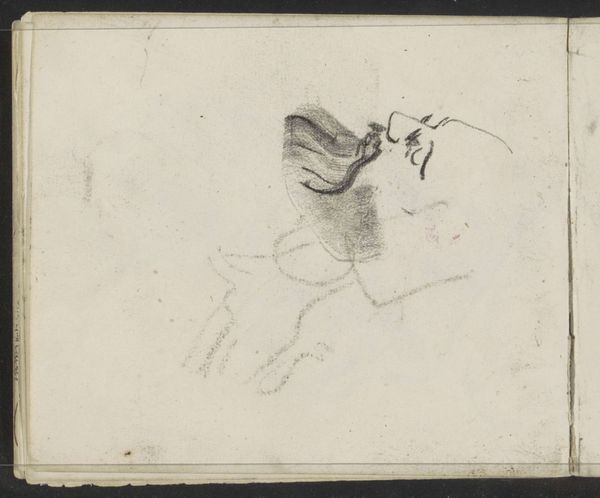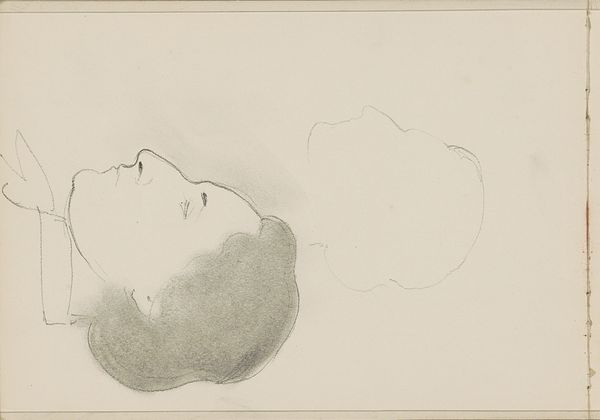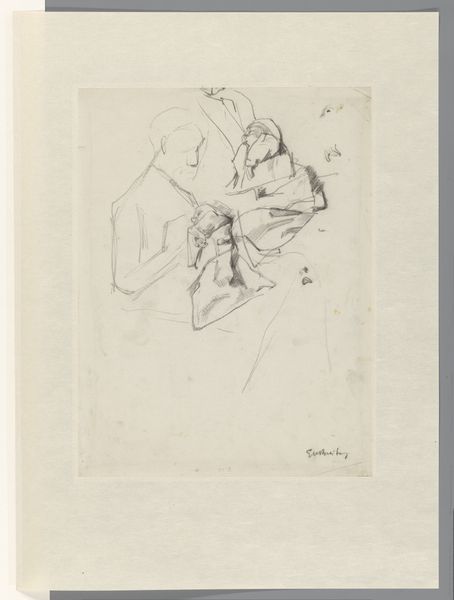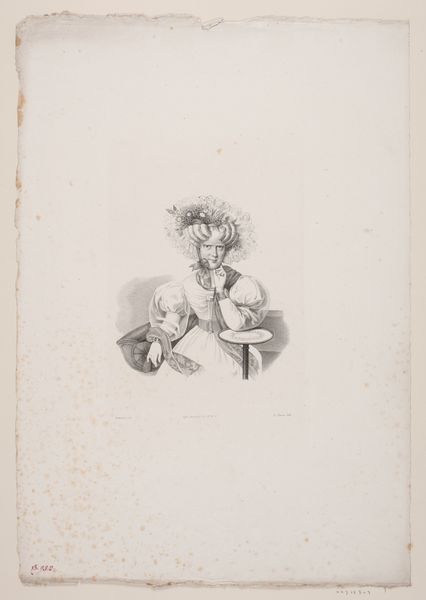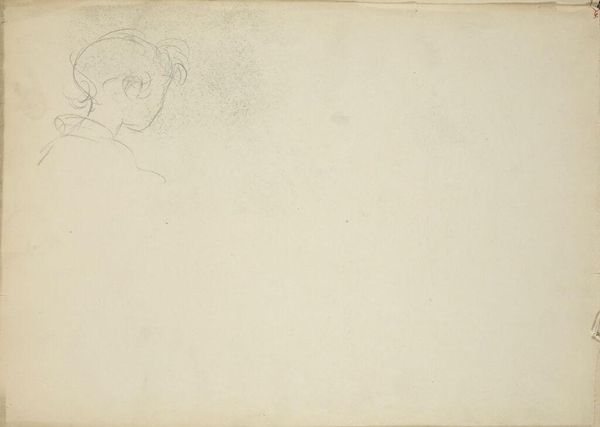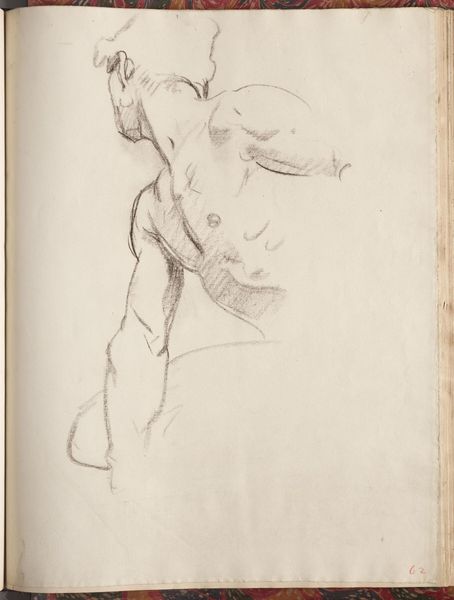
drawing, ink, pen
#
portrait
#
drawing
#
sketch book
#
ink
#
sketch
#
pen-ink sketch
#
sketchbook drawing
#
pen
Copyright: Rijks Museum: Open Domain
Curator: This is "Twee Koppen," or "Two Heads," a pen and ink drawing by Louis Royer, created sometime between 1843 and 1864. It resides here at the Rijksmuseum. What's your first take? Editor: I see vulnerability. Both subjects have their faces tilted upwards, necks exposed, as though awaiting something, or perhaps surrendering. Curator: The use of line is quite interesting here, don't you think? Look at how Royer establishes form with such minimal strokes, the upper head barely articulated, a ghost of an image in comparison to the more defined lower face. Editor: And notice how that contrast evokes class differences. The sketch of the upper head is very light and undefined, while the lines defining the face of the lower head are much darker, the person’s brow is furrowed, his hair thicker. The bare page shows light highlighting his face. What do you think Royer is communicating in making these people look so different? Curator: The hatching and cross-hatching definitely lend depth to the lower figure, a sculptural quality even, that is missing from the upper head. Perhaps this suggests Royer's mastery of the medium evolving, or simply different studies executed for varying purposes. Editor: Or perhaps he's making a broader social commentary? The contrast makes me think about the laboring class looking to the wealthy, hopeful for a crumb of the benefits, for a path. We have no idea what Royer's specific intentions were, but we do know this image, which depicts the lower subject staring directly up, and it seems that there is no interaction at all. Curator: That may well be. It would be fascinating to delve deeper into Royer’s other works and the cultural climate of the mid-19th century in the Netherlands to ascertain this more definitively. Editor: Indeed. And considering the material context—ink on paper from the mid-1800s, what narratives do the artist and these individuals provoke about labor and personhood? It's an invitation to consider what’s changed, but especially what hasn't changed, over time. Curator: A lot to unpack in a simple sketch. It highlights the complexities inherent in interpreting even seemingly straightforward portraiture.
Comments
No comments
Be the first to comment and join the conversation on the ultimate creative platform.
